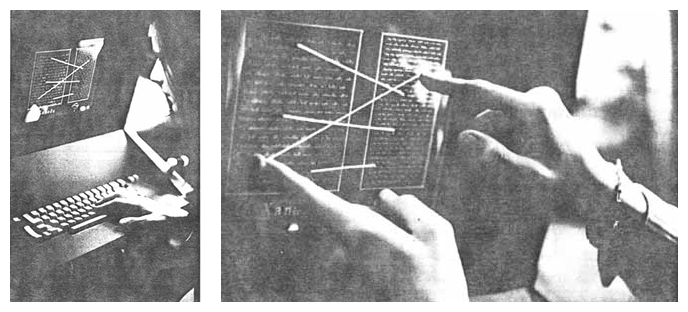Since writing this post, I’ve changed my views on the topic. I’ll keep it here for reference, but if you’re interested in my updated thoughts, check out the follow-up: Revisiting the Web’s Biggest Problem.
The World Wide Web started as a web of documents. That was back in the early ’90s. Web pages were static HTML documents—simple, read-only pages that just presented information. There was no interactivity. Then, in 1995, JavaScript was added to browsers, changing everything.
When you add a script to a web page, the page has to become a container. You don’t want the code on a page to access your file system, for example. You don’t want it making unauthorized requests to other servers. So, browsers imposed all sorts of restrictions to keep code in check. But in doing so, they also locked up content.
The Web as a Jail

Imagine each page in your browser as a jail cell. Inside every cell, there are two prisoners: content and code. Content is like a disabled person—paralyzed. It consists of text and images, which just sit there passively. It’s harmless.
Code, on the other hand, is unpredictable. You don’t know who wrote it. You downloaded it from some website, and now you have to run it on your computer. So, it’s placed in a container—a controlled environment. Each web page is its own separate container.
Why Is This a Problem?
Each page, being locked in its own container, becomes its own isolated universe, completely disconnected from everything else. The entire Web is now just a collection of parallel worlds with no bridges between them.
Because of this, certain features become impossible. For example, you can’t have visible connections between pages. You can’t combine multiple documents from different websites onto a single page.

It’s impossible to have them between regular web pages.
You also run into all sorts of problems with saving and caching documents. Try saving a web page, and very often, the saved version appears broken. Pages today are too dependent on live server connections. If a server goes down, the content disappears.
The Web started as a web of documents, but it was transformed into a web of containers running apps inside them. These apps often don’t function without an internet connection. They construct pages on the fly, eating up your computer’s RAM and slowing everything down. Worse, many of them track your activity and collect data on you.
The Solution: Bring Back the Static Web
The Web should primarily be a web of documents, with containers used sparingly. Right now, it’s the opposite—it’s a web of containers. Even if a page has no code, it doesn’t matter. It’s still in a container. Browsers treat all pages the same.
To rebuild the Static Web, I propose three new data formats:
- HDOC: A static equivalent of an HTML document. It uses standard HTML tags but can’t contain any scripts.
- CDOC: A collage format that can contain images, text, lines, and other documents (including HDOCs). It’s based on SVG and is partially defined at this time.
- SDOC: A 3D scene format that can include various document types. This is still in the conceptual phase but will be based on an existing 3D graphics format.
All three formats are purely static and contain no executable code. This means they don’t need to be locked inside a container. You can save them on your computer, and they will always appear the same. They have no dependencies. They are as robust and enduring as Sumerian clay tablets.
By adopting these formats, we can move back to a Web that is durable, reliable, and truly interconnected—just as it was meant to be.
Examples
Almost any web page can have an alternative version in the form of an HDOC. Here is what downloading an HDOC looks like:
Here is an example of visible connections between web pages – something that is impossible on the modern Web with regular web pages:
And in this video you can see how an HDOC can be downloaded into a 3D environment:
Adoption of the Web 1.1
At first, the new data formats will be used in spatial storage apps, like LZ Desktop. You will browse web as usual, using your favourite browser. Web 1.1 will help you download and spatially organise webpages on your computer.
I wrote about stages of Web’s evolution and incentives for its adoption in other posts.
Inspiration for the new Web
The Web I propose—Web 1.1, or the Static Web—is heavily inspired by Ted Nelson’s project Xanadu. Ted Nelson, one of computing’s pioneers, coined the word “hypertext.” Today, we associate hypertext with HTML, but what he envisioned in the 1960s was much more ambitious.
Modern Web links (which Nelson calls “jump-links”) are just one small part of what Xanadu aimed for. Xanadu had visible connections between documents, transclusions (where a document could include parts of another document), built-in versioning, and more.
I’ll dive deeper into Xanadu in another post.
Will Web 1.1 succeed?
You may be skeptical. After all, anyone can invent a new data format. The real question is whether it will gain adoption.
The reason I’m optimistic about Web 1.1 is that I believe I’ve identified strong incentives for website owners to start using these new formats.
I talk about that in another post.